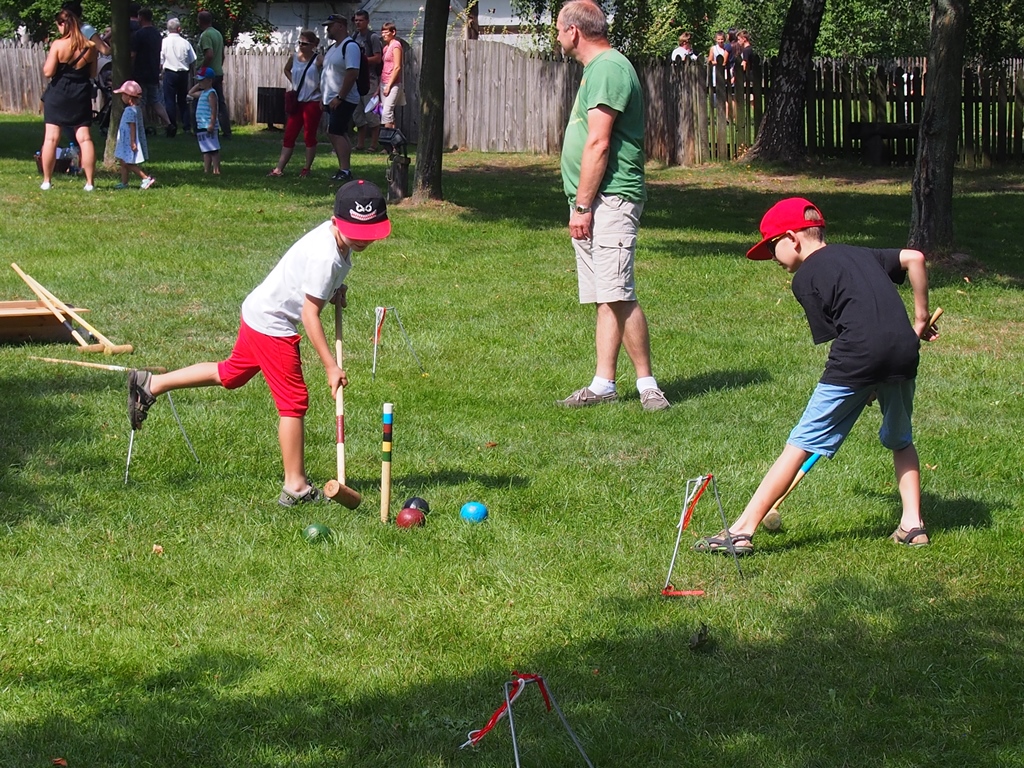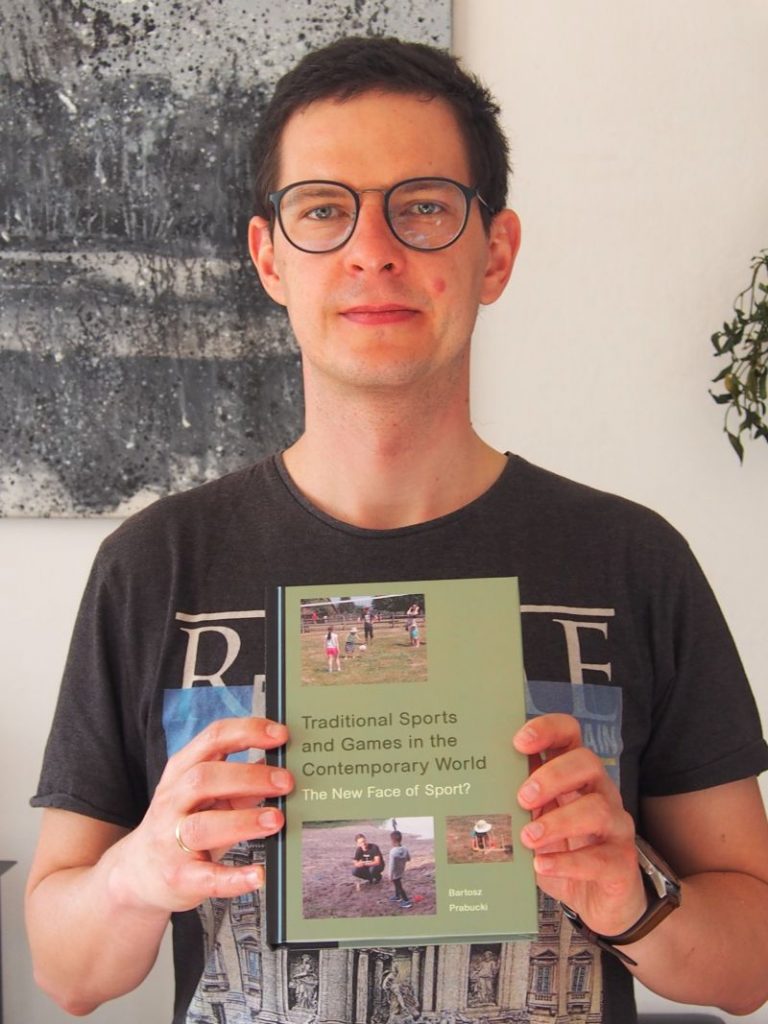
My friend and traditional sports enthusiast – Zhu Qian – sent me a very interesting story about workshops from traditional games in his town – Anji, China. He accepted to share it with us on my blog.
Community traditional games’ workshops in Anji, China
The whole workshop attracted about 50 people.
Firstly, they all joined a hopscotch game.

Hopscotch (in Chinese called tiao-fang-zi – which literally means “jumping over boxes”) is a universal, playground game in which players toss a small object into numbered triangles or a pattern of rectangles outlined on the ground and then hop or jump through the spaces and retrieve the object.
The first player tosses a marker, also called a lucky, onto the court. The marker (typically a small stone, coin, bean bag, or small chain with a charm) should land in the square without bouncing, sliding or rolling out.
The marker must be completely within the square without touching the line. The player then hops through the course, skipping the marker’s square.
Single squares must be hopped on one foot, except for the first single square, where either foot may be used.
Side-by-side squares are straddled, which means that you should stand with your left foot in the left square and with your right foot in the right one.
While hopping through the court in either direction, if the player:
- steps on a line,
- misses a square,
- or loses balance, his/her turn ends.

Players begin their turns where they last left off. The first player to complete one course for every numbered square on the court, wins the game.

After hopscotch – Mölkky game!
The second game was Finnish Skittles (also called Mölkky in Finnish).
It is a Finnish throwing game, invented by Lahden Paikka company in 1996. It is reminiscent of kyykkä, a centuries-old, throwing game with Karelian roots.
However, Mölkky does not require as much physical strength as kyykkä, and is more suitable for everyone regardless of age and condition.
Mölkky requires no special equipment and success is based on a combination of chance and skill.
Players use a wooden pin to try to knock over wooden pins (also called “skittles”) of almost similar dimensions with the throwing pin, which are marked with numbers from 1 to 12.


The basic rules are the following:
- The pins are initially placed in a tight group in an upright position 3–4 meters away from the throwing line (as at the scheme above).
- Knocking over one pin scores the exact number of points, marked on this pin.
- Knocking 2 or more pins scores the number of pins knocked over (e.g., knocking over 3 pins scores 3 points).
- A pin does not count if it is leaning on the throwing stick or one of the numbered pins (it must be parallel to the ground to count).
- After each throw, the pins are stood up again in the exact location where they landed.
- The first one to reach exactly 50 points wins the game. Scoring more than 50 will be penalised by setting the player’s score back to 25 points!
- The player is eliminated from the game if he/she misses all of the target pins three times in a row (you can also play with a rule that this person can continue playing, but her/his score is again 0 (zero)).
As Zhu Qian said: “We played Finnish skittles as we formed two teams”.

For more about this Finnish sport, you can visit:
The power of traditional games
As my friend from China – Zhu Qian – said: “the workshops lasted about two hours and everyone was delighted”.
And tha is all about.
As we could see, only two traditional games were enough to:
- engage local inhabitants,
- to integrate them and
- to make them being delighted, thanks to their active participation in simple, funny and attractive games.
This is the power of traditional games!




Bartosz, en lugar de usar un perno de lanzamiento, ¿no sería más fácil para una bola de madera de diámetro reducido? Sería como la bocha, manteniendo las proporciones.
Me imagino que lanzar el alfiler debe ser desde arriba, para que toque el suelo cerca de los objetivos, y luego contar con suerte, ya que se extenderán hacia los lados. Más adelante, los lanzamientos se vuelven mucho más difíciles, especialmente cuando se trata de niños, e incluso de jóvenes.
Si hay demasiada dificultad, el juego continuará durante mucho tiempo, lo que conduce a cierto desinterés. ¿Que crees?
Estimado Roberto,
gracias por tu comentario. De que juego hablas?